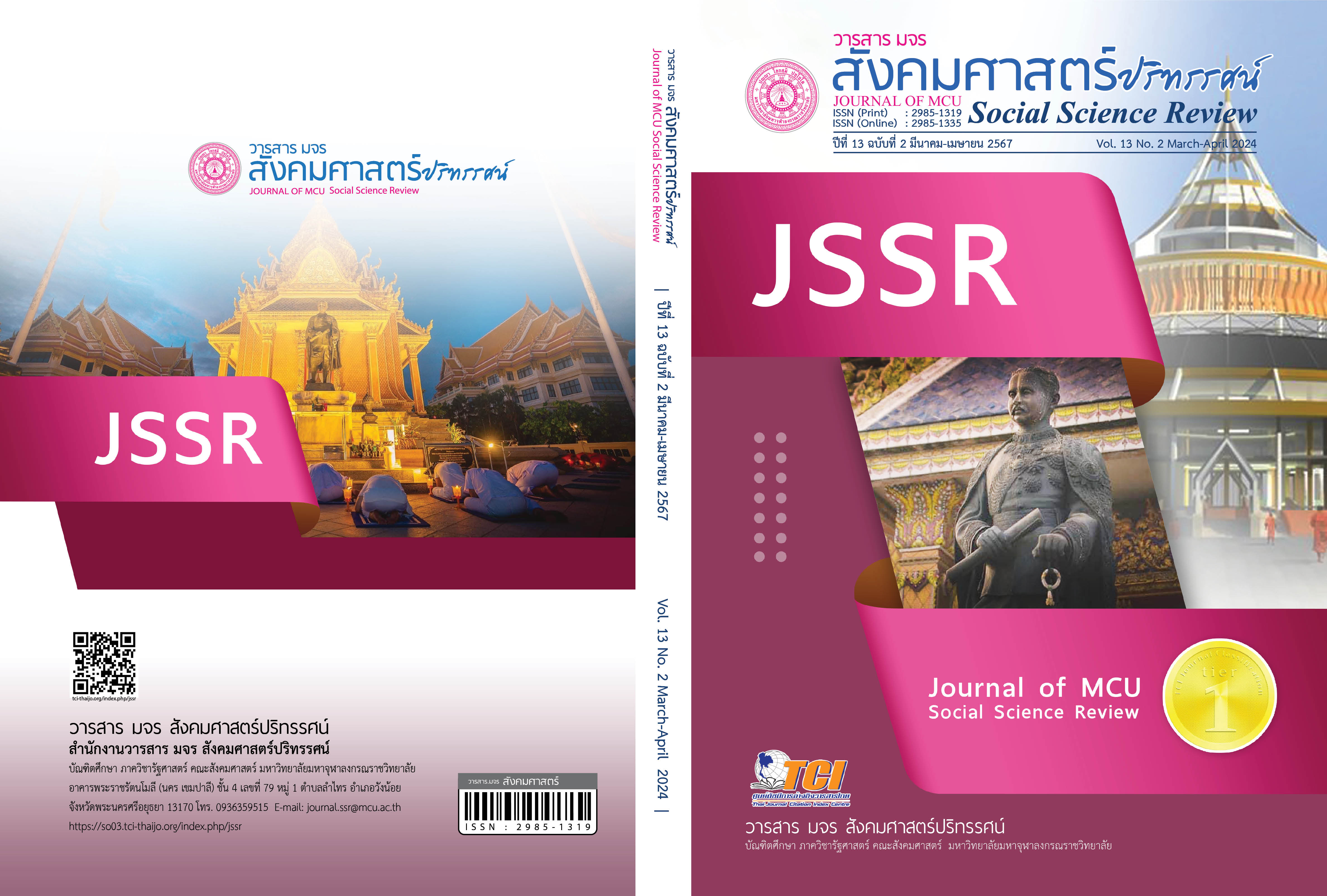ผลการจัดการเรียนรู้โดยใช้โปรแกรม Kahoot ที่มีต่อผลสัมฤทธิ์ทางการเรียน ความคงทนในการเรียนรู้ และความพึงพอใจต่อการจัดการเรียนรู้ของนิสิตแพทย์
คำสำคัญ:
ความคงทน, ความพึงพอใจ, คาฮูท, การจัดการเรียนรู้บทคัดย่อ
บทความวิจัยนี้มีวัตถุประสงค์ 1. เปรียบเทียบผลสัมฤทธิ์ทางการเรียนเรื่องโรคหลอดเลือดในสมองแตก ของนิสิตแพทย์ ชั้นปีที่ 5 ก่อนและหลังการเรียนด้วยกิจกรรมโปรแกรม Kahoot 2. ศึกษาความพึงพอใจ 3. ศึกษาความคงทนในการเรียนรู้ กลุ่มตัวอย่างในการวิจัย ได้แก่ นิสิตแพทย์ ชั้นปีที่ 5 ศูนย์แพทยศาสตร์ศึกษาชั้นคลินิก โรงพยาบาลกาฬสินธุ์ จำนวน 15 คน ได้มาโดยการคัดเลือกแบบเจาะจง (Purposive Sampling) เครื่องมือที่ใช้ในการวิจัยครั้งนี้ ประกอบด้วย 1) แผนการจัดการเรียนรู้ 2) แบบทดสอบวัดผลสัมฤทธิ์ทางการเรียน 3) แบบวัดความพึงพอใจ และ 4) แบบวัดความคงทน สถิติที่ใช้ในการวิเคราะห์ข้อมูล ได้แก่ ค่าเฉลี่ย ส่วนเบี่ยงเบนมาตรฐาน และการทดสอบค่าทีกลุ่มที่ไม่เป็นอิสระจากกัน
ผลการวิจัยพบว่า 1. ผลสัมฤทธิ์ทางการเรียนเรื่องโรคหลอดเลือดในสมองแตกในรายวิชาศัลยศาสตร์ 3 ของนิสิตแพทย์ ก่อนและหลังการจัดกิจกรรมเสริมการเรียนรู้ โดยใช้โปรแกรม Kahoot อย่างมีนัยสําคัญทางสถิติที่ระดับ .05 2. ผลการวิเคราะห์ความพึงพอใจของนิสิตแพทย์ มีความพึงพอใจต่อการจัดกิจกรรมเสริมการเรียนรู้ เรื่อง โดยใช้โปรแกรม Kahoot ในภาพรวมอยู่ในระดับมากที่สุด 3. เมื่อเว้นช่วงเวลา 2 สัปดาห์ พบว่า นิสิตแพทย์ที่ได้รับการสอนการจัดกิจกรรมเสริมการเรียนรู้ โดยใช้โปรแกรม Kahoot ยังมีความคงทนในการเรียนรู้ อย่างมีนัยสำคัญทางสถิติที่ระดับ .05
เอกสารอ้างอิง
กิ่งกมล ศิริประเสริฐ และกอบสุข คงมนัส. (2564). ผลการจัดการเรียนรู้โดยใช้ห้องเรียนกลับด้านร่วมกับเกม Kahoot วิชาภาษาอังกฤษที่มีตอผลสัมฤทธิ์ทางการเรียนและการกำกับตนเองของนักเรียนชั้นมัธยมศึกษาปีที่ 2. วารสารวิจัยและนวัตกรรม, 4(2), 157–180.
เจษฎา ราษฏร์นิยม. (2564). ผลของการใช้ Kahoot เป็นเครื่องมือช่วยวัดประเมินผลระหว่างเรียนในการจัดการเรียนรู้แบบ4E×2 ที่มีต่อผลสัมฤทธิ์ทางการเรียนและความสามารถในการคิดวิเคราะห์. วารสารวิทยาศาสตร์และวิทยาศาสตร์ศึกษา, 4(2), 264-278.
ตรีพร กำลังเกื้อ และคณะ. (2561). ทัศนคติของนิสิตแพทย์ต่อการจัดการเรียนการสอนวอร์ดราวน์ในหลักสูตรแพทยศาสตร์บัณฑิต. วารสารรามาธิบดีเวชสาร, 41(1), 48-57.
จีระพงษ์ โพพันธุ์. (2562). ความหมายของเทคโนโลยี. สืบค้น 26 กุมภาพันธ์ 2566, จาก https://kru-it.com/design-andtechnology-m1/definition-of-technology/
ปริญญาภรณ์ พิลึก. (2558). ความพึงพอใจของนิสิตแพทย์ชั้นปีที่ 4 ที่มีต่อการจัดการเรียนการสอน ในรายวิชาบูรณาการอายุรศาสตร์ ภาควิชาอายุรศาสตร์ คณะแพทยศาสตร์ มหาวิทยาลัยธรรมศาสตร์. วารสารธรรมศาสตร์เวชสาร, 15(3), 434-442.
Debbita, T. A. L. (2018). Kahoot! It: Gamification in Higher Education. Pertanika Journal of Social Science and Humanities, 26(1), 565-582.
Donkin, R. & Rasmussen, R. (2021). Student Perception and the Effectiveness of Kahoot!: A Scoping Review in Histology, Anatomy, and Medical Education. Anat Sci Educ, 14(5), 572-585.
Ismail, M. A. A. et al. (2019). Using Kahoot!! as a formative assessment tool in medical education: a phenomenological study. BMC medical education, 19(1), 230-238.
Shawwa, L. & Kamel, F. (2023). Assessing the Knowledge and Perceptions of Medical Students After Using Kahoot! in Pharmacology Practical Sessions at King Abdulaziz University, Jeddah. Cureus, 15(3), 1-8.
Wang, A. I. (2016). The effect of digitizing and gamifying quizzing in classrooms.Scotland: University of the West of Scotland, Paisley.
ดาวน์โหลด
เผยแพร่แล้ว
รูปแบบการอ้างอิง
ฉบับ
ประเภทบทความ
สัญญาอนุญาต
ลิขสิทธิ์ (c) 2024 วารสาร มจร สังคมศาสตร์ปริทรรศน์

อนุญาตภายใต้เงื่อนไข Creative Commons Attribution-NonCommercial-NoDerivatives 4.0 International License.
เพื่อให้เป็นไปตามกฎหมายลิขสิทธิ์ ผู้นิพนธ์ทุกท่านต้องลงลายมือชื่อในแบบฟอร์มใบมอบลิขสิทธิ์บทความให้แก่วารสารฯ พร้อมกับบทความต้นฉบับที่ได้แก้ไขครั้งสุดท้าย นอกจากนี้ ผู้นิพนธ์ทุกท่านต้องยืนยันว่าบทความต้นฉบับที่ส่งมาตีพิมพ์นั้น ได้ส่งมาตีพิมพ์เฉพาะในวารสาร มจร สังคมศาสตร์ปริทรรศน์ เพียงแห่งเดียวเท่านั้น หากมีการใช้ภาพหรือตารางหรือเนื้อหาอื่นๆ ของผู้นิพนธ์อื่นที่ปรากฏในสิ่งตีพิมพ์อื่นมาแล้ว ผู้นิพนธ์ต้องขออนุญาตเจ้าของลิขสิทธิ์ก่อน พร้อมทั้งแสดงหนังสือที่ได้รับการยินยอมต่อบรรณาธิการ ก่อนที่บทความจะได้รับการตีพิมพ์ หากไม่เป็นไปตามข้อกำหนดเบื้องต้น ทางวารสารจะถอดบทความของท่านออกโดยไม่มีข้อยกเว้นใดๆ ทั้งสิ้น





